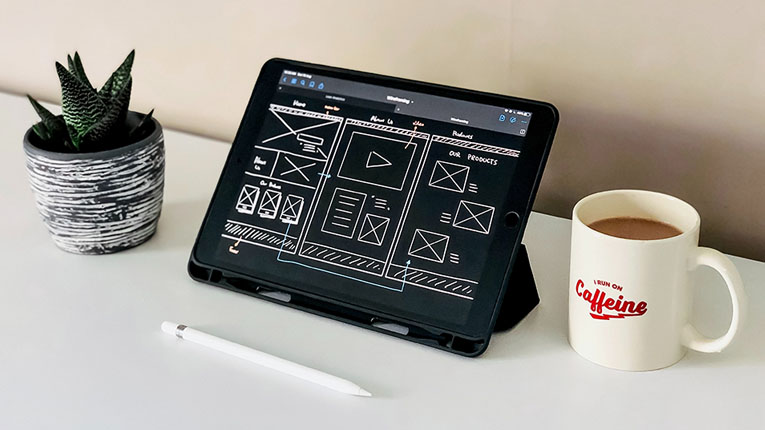UX tips: How to add features without things getting clunky

Posted: Thu 25th Feb 2021
If you think that each step your customer takes brings them a step towards or away from their goals, what do you think works, and what doesn't?
As your website or app expands over the months and years, it is easy for it to become a tangled path. Each time you add something new, you might be tempted to add it straight into the main menu list of options because you'll want people to see it - but there's a reason this isn't wise.
However, unless this was planned out in advance, not only is it unscalable, but it can also start to feel crowded; reducing visibility of the very thing you wish to highlight.
To avoid overloading menus, you can make content or a feature stand out in different ways such as through clear signposting, menu structures that are logical to the target user's way of thinking, or content blocks suggesting recommendations or related items, not to mention through marketing.
If possible; plan ahead. What content will there be? How will it be grouped? What are the key messages to convey?
Have you story mapped your product? If so, you'll know where it's going and this will help give it definition and focus.
UX specialist Liz is a valued member of the Enterprise Nation community. Connect with her today
Menus that inform
As a set, menu labels give you an idea of the focus and breadth of the offering. This is one reason to use words rather than icons alone in your menus.
Stick to the language your customers know and use when labelling sections of the website or features. There may be exceptions where big brands have managed to coin a phrase but this is the rare exception. Using labels that require you to be an insider and know what the term means are often a barrier to knowing what you do and offer.
Each menu item should be unambiguous, clearly differentiated from the others, and of the same level of granularity.
Imagine Bathroom | Lounge | Kitchen versus Bathroom | Lounge | Spatulas
If you end up with a very large menu, you can look at different UI styles that might be better suited (such as mega menus, accordions, landing pages etc) but you can also look at reorganising and seeing if things can be grouped better. Search for "card sorting tutorials" or connect with me for a bit more info on how to do that.
It's OK to cut and pivot
In the same way you might declutter your house, consider the same approach for your website. Do an audit and be ruthless. Consult your stats on who sees and uses what to inform this process.
Is the new content totally unique, or does it unintentionally repeat large areas of information or functionality? If so, could it be merged and something else edited down or removed?
If the repetition is intentional, then it makes sense to keep it (a little redundancy can be useful, e.g. presenting the same item in different ways to give it visibility or to get a message across).
Reduction may feel scary, but it can also be a relief when things are clear and uncrowded.
You can always repurpose it, whether content for your social media or a feature that sits better somewhere else.
Bulky apps and websites are also harder to maintain, so if doing a clear out feels like hard work now, your future self might just appreciate it later on!
Three questions you can ask yourself
Does this content clearly support my current strategic offering?
How have my customers arrived here and where do they go next?
What do my customers understand by this?
Relevant resources
Get business support right to your inbox
Subscribe to our newsletter to receive business tips, learn about new funding programmes, join upcoming events, take e-learning courses, and more.
Start your business journey today
Take the first step to successfully starting and growing your business.
Join for free
